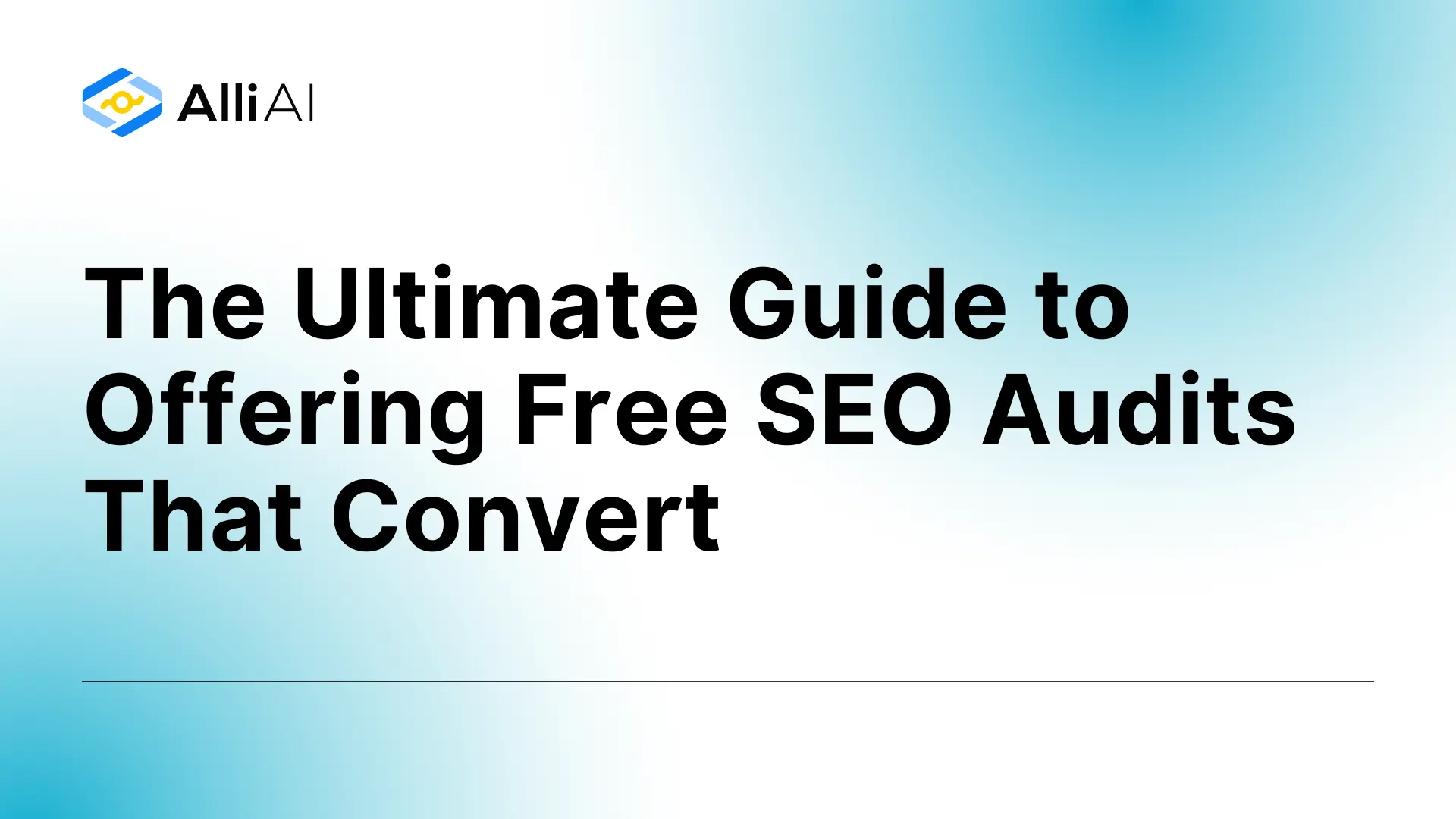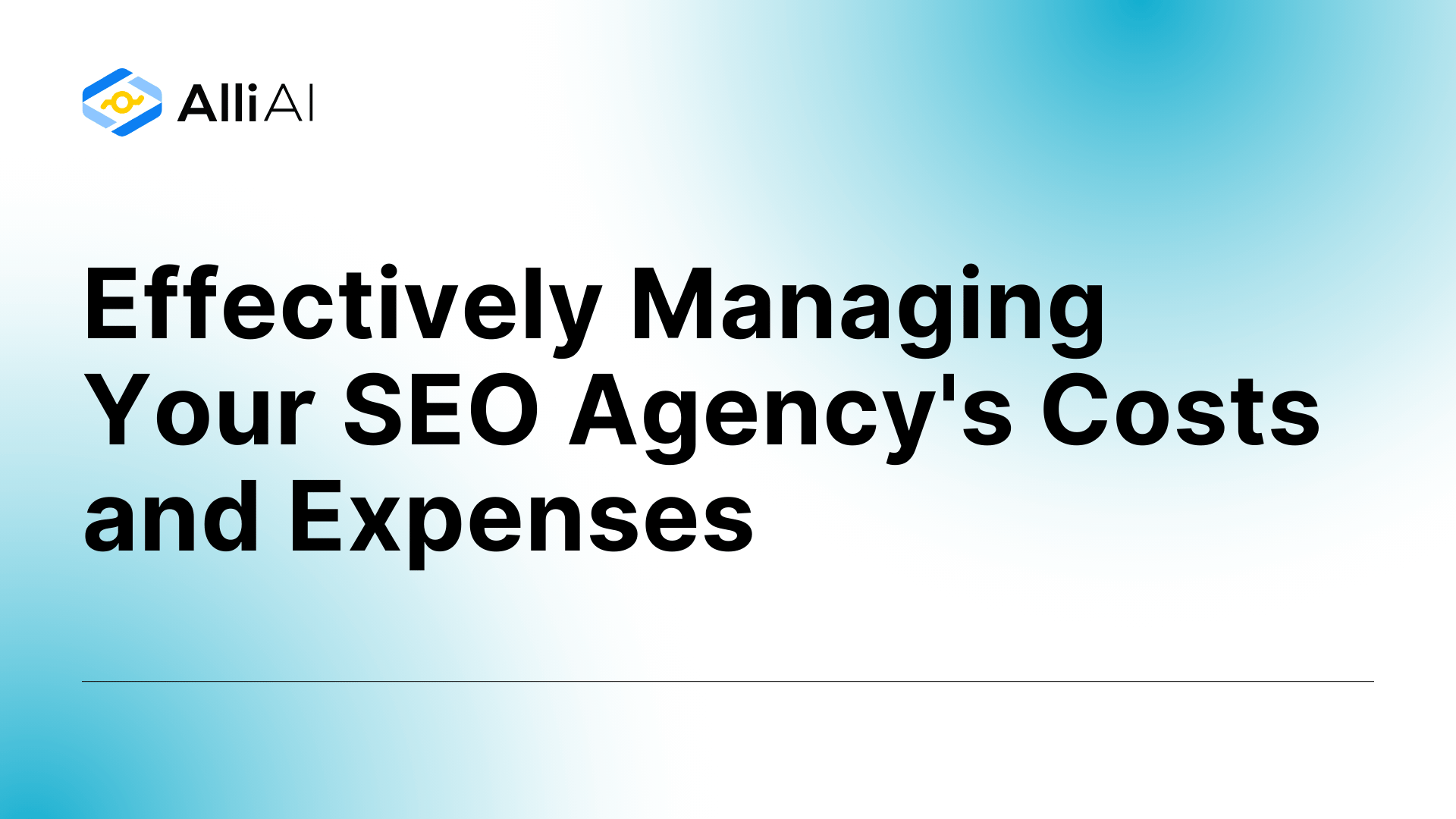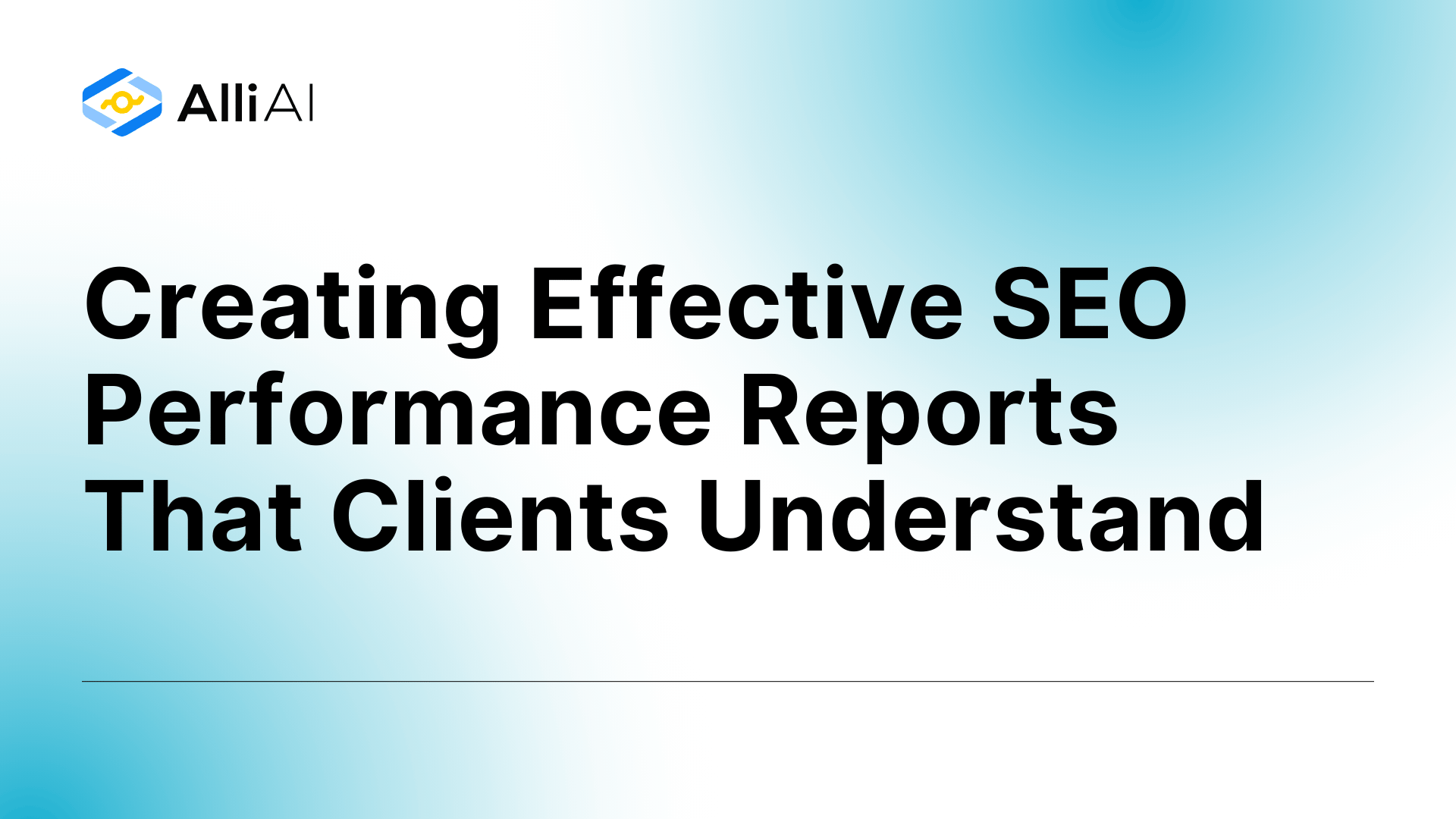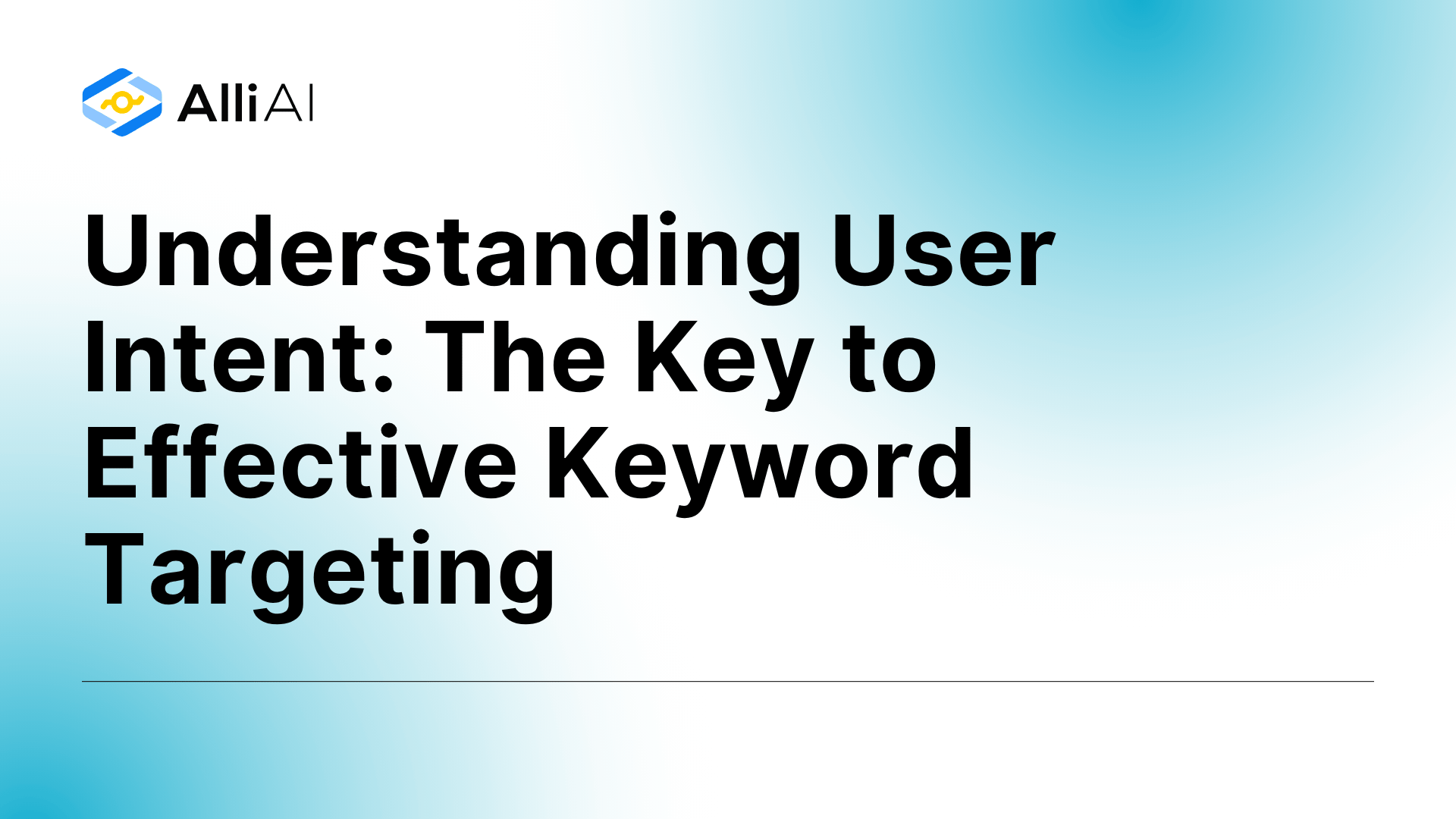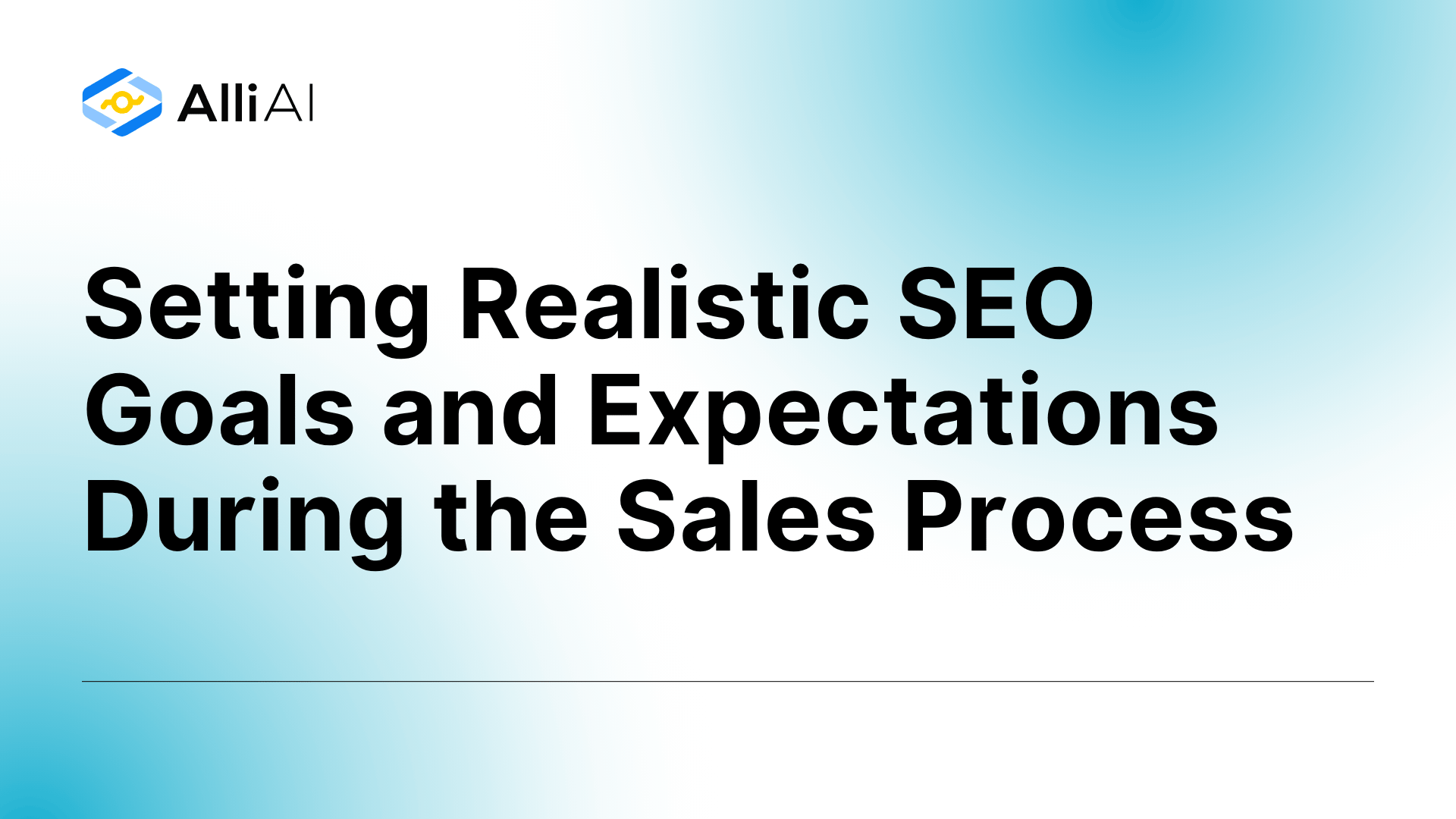Struggling to move beyond basic SEO packages and convince clients to invest in comprehensive strategies? The key is demonstrating clear business value through data-driven insights and strategic positioning. This approach helped our agency increase average client retainer values by 300% while building lasting partnerships that span years rather than months.
Most agencies make the mistake of leading with technical jargon or listing features without connecting them to business outcomes. Your clients don’t care about domain authority scores or crawl budget optimization unless you can show exactly how these improvements translate into revenue, leads, or market share growth.
Step #1. Position Your Agency as a Strategic Growth Partner
Your first step is shifting from being perceived as a vendor to becoming a trusted business advisor. This fundamental repositioning makes all the difference when proposing higher-value services.
Start by conducting a thorough discovery phase that goes far beyond typical SEO questions. Instead of asking “What keywords do you want to rank for?” dig deeper into their business model, revenue goals, customer lifecycle, and competitive challenges. Schedule meetings with multiple stakeholders—not just the marketing manager, but also sales directors, product teams, and even C-suite executives when possible.
During these conversations, listen for pain points that expanded SEO can address. Are they struggling with lead quality? Losing market share to competitors? Launching new products that need visibility? Each challenge becomes an opportunity to demonstrate how comprehensive SEO strategies solve real business problems.
Imagine you’re meeting with a B2B software company. Rather than immediately discussing their current rankings, you discover they’re expanding into three new markets but struggling to establish credibility with prospects who’ve never heard of their brand. This insight opens the door to discussing E-E-A-T (Experience, Expertise, Authoritativeness, Trustworthiness) strategies, content marketing that demonstrates thought leadership, and strategic link building from industry publications.
The trick is asking business-focused questions like “What’s preventing you from reaching your revenue goals?” and “Where do your best customers discover you?” These responses give you the ammunition to position expanded SEO as a growth investment rather than a marketing expense.
Step #2. Conduct Comprehensive Audits That Reveal Hidden Opportunities
Nothing builds credibility faster than uncovering problems your prospects didn’t know they had. Comprehensive audits become your secret weapon for justifying expanded services through concrete evidence.
Your audit approach should examine three critical areas: technical infrastructure, content gaps, and competitive positioning. Each audit type serves a specific purpose in building your case for expanded services.
For technical audits, go beyond basic site speed tests. Examine crawl budget allocation, identify server log patterns that reveal wasted resources, analyze Core Web Vitals across different user segments, and uncover indexing issues that may be hiding valuable pages from search engines. When presenting findings, translate technical problems into business impact. Don’t just say “Your site has 47 crawl errors.” Instead, explain “Search engines are missing 47 pages of your content, potentially costing you an estimated 2,300 monthly visitors based on historical performance data.”
Content gap analysis reveals where competitors are capturing traffic you’re missing. Use tools like Ahrefs or SEMrush to identify keywords where competitors rank on page one while your client doesn’t appear in the top 100. Create visual content maps showing these gaps alongside estimated traffic potential and conversion opportunities.
Your backlink profile review should highlight both opportunities and risks. Show clients how competitors are building authority through strategic partnerships, guest content, and industry relationships. Equally important, identify any toxic links that could trigger penalties and explain the ongoing risk management that expanded SEO provides.
The goal isn’t to overwhelm prospects with problems, but to demonstrate that you see opportunities others miss. Frame each finding as “untapped potential” rather than failures, and always connect discoveries to projected business outcomes.
Table 1: Expanded SEO Services & Corresponding Business Impact
| Expanded SEO Service | Key Activities | Direct SEO Benefit | Tangible Business Impact for Client |
| Advanced Technical SEO | Site speed optimization (Core Web Vitals), mobile-friendliness, schema markup, crawlability fixes, HTTPS | Improved crawlability & indexability, faster load times, enhanced UX, rich snippets | Increased organic visibility, lower bounce rates, higher engagement, improved conversion rates, stronger foundation for all content efforts |
| Comprehensive Content Strategy | In-depth keyword research, content gap analysis, E-E-A-T focused content creation, buyer journey mapping | Higher rankings for relevant keywords, increased organic traffic, topic authority | More qualified leads, better lead nurturing, established thought leadership, improved brand perception, higher customer engagement |
| Strategic Link Building | High-quality backlink acquisition, guest blogging, digital PR, unlinked brand mention reclamation | Increased domain authority/rating, improved SERP rankings, referral traffic | Enhanced brand credibility & trust, greater online visibility, access to new audiences, stronger competitive positioning |
| Local SEO Optimization | GBP optimization, local citation management, review generation & management, local keyword targeting | Higher visibility in local pack & maps, increased local organic traffic | More foot traffic to physical locations, increased local calls & direction requests, improved local market share, better local brand reputation |
| International SEO | Hreflang implementation, international URL structuring, content localization, international link building | Targeted visibility in global markets, correct language/region indexing | Expansion into new geographic markets, increased international sales & leads, stronger global brand presence, tailored user experience for diverse audiences |
| E-commerce SEO | Product & category page optimization, e-commerce schema, technical SEO for platform, internal linking strategy | Improved product visibility in SERPs, higher rankings for transactional keywords | Increased online sales, higher average order value, reduced cart abandonment (with UX focus), better ROI from product listings |
| Voice Search Optimization | Conversational keyword targeting, FAQ content creation, structured data for voice | Appearance in voice search results, featured snippets | Increased reach via voice assistants, capture of hands-free searchers, enhanced accessibility, positioning as a quick answer provider |
| Video SEO | YouTube optimization, video keyword research, transcripts, compelling thumbnails, video embedding strategy | Higher rankings in video search (Google & YouTube), increased video views & engagement | Enhanced brand storytelling, broader audience reach, improved user engagement on-site, potential for viral sharing, direct traffic from video platforms |
| Conversion Rate Optimization | A/B testing, landing page optimization, UX improvements, funnel analysis, call-to-action optimization | Improved user flow, lower bounce rates on key pages, higher goal completion rates | Increased leads from existing traffic, higher sales conversion rates, improved ROI from all traffic sources, better understanding of user behavior on site |
Step #3. Use Data-Driven Forecasting to Project Clear ROI
Vague promises about “increased traffic” won’t secure budget approval for expanded services. You need concrete projections that finance teams can evaluate alongside other investment opportunities.
Start by gathering baseline data from multiple sources. Combine the client’s Google Analytics and Search Console data with third-party research from tools like Ahrefs, SEMrush, or similar platforms. Look at their current organic traffic, conversion rates by traffic source, average customer lifetime value, and seasonal patterns that might affect projections.
Build conservative, realistic, and optimistic scenarios for each proposed service. For a comprehensive content strategy, calculate potential traffic from target keywords, adjust for realistic click-through rates (remembering that AI Overviews and SERP features now capture significant click share), and apply the client’s historical conversion rates to project lead generation.
Here’s a practical example: If your analysis shows 50 high-intent keywords with a combined monthly search volume of 10,000, and you can realistically achieve average positions of 3-5 for these terms, you might project 800-1,200 monthly clicks. Apply their 3% conversion rate and $5,000 average customer value, and you’re looking at 24-36 new customers monthly worth $120,000-$180,000 in revenue.
Present these projections using visual aids like waterfall charts that show the progression from search volume to clicks to conversions to revenue. Include timeline expectations—typically 3-6 months for initial improvements and 6-12 months for substantial results from expanded strategies.
The key is being transparent about assumptions while showing how expanded SEO generates measurable business value that far exceeds the investment required.
Table 2: Key KPIs for Expanded SEO Services and How They Demonstrate Value
| Expanded SEO Service Area | Key KPI | How it Demonstrates Business Value to Client |
| Advanced Technical SEO | Core Web Vitals Pass Rate (%) | Improved site speed enhances user satisfaction, reduces lost sales from frustration, and is a Google ranking factor, leading to more visible and converting pages. |
| Index Coverage Rate / Crawl Errors | Ensures all valuable content is discoverable by search engines and users, maximizing the reach of marketing efforts and preventing lost opportunities. | |
| Comprehensive Content Strategy | Organic Conversion Rate (by content type/funnel stage) | Shows which content effectively moves users towards purchase or lead submission, optimizing content ROI and informing future content creation. |
| Engagement Rate (Time on Page, Scroll Depth) | Indicates content relevance and quality, leading to more informed and engaged prospects who are more likely to convert. | |
| Strategic Link Building | Referring Domain Authority Growth (Avg. DR/DA of new links) | Signifies increasing site credibility and trust from other authoritative sources, leading to higher rankings and more qualified referral traffic. |
| Number of Quality Referring Domains | A diverse and growing portfolio of high-quality backlinks strengthens overall site authority and resilience against algorithm changes. | |
| E-commerce SEO | Product Page Conversion Rate (from Organic) | Directly measures the effectiveness of SEO in driving sales for specific products, providing clear ROI for e-commerce businesses. |
| Average Order Value (AOV) from Organic | Shows if SEO is attracting customers who spend more, impacting overall revenue beyond just the number of transactions. | |
| CRO (Integrated with SEO) | Lead Form Submission Rate / Demo Requests (from Organic) | Measures how effectively website traffic is converted into actionable leads, directly impacting the sales pipeline. |
| Goal Completion Rate (for non-transactional goals) | Tracks completion of important micro-conversions (e.g., newsletter sign-ups, resource downloads) that nurture leads and build audience. | |
| Brand & Visibility | Branded Search Volume Growth | Indicates increased brand awareness and recall, showing that overall marketing and SEO efforts are making the brand more recognizable. |
| Share of Voice (SOV) for Target Topics | Measures market penetration and competitive standing for key industry terms, reflecting brand authority and visibility against competitors. | |
| Overall Business Impact | Customer Lifetime Value (CLV) from Organic | Highlights the long-term profitability of customers acquired via SEO, justifying sustained investment in organic growth. |
| Organic Cost Per Acquisition (CPA) | Demonstrates the cost-efficiency of SEO in acquiring customers compared to other marketing channels like paid advertising. |
Step #4. Craft Industry-Specific Case Studies That Build Credibility
Generic case studies fall flat when clients need proof you understand their specific challenges. Industry-specific success stories become your most powerful sales tools for expanded services.
Develop detailed case studies that follow a problem-solution-results narrative structure. Start with a client introduction that mirrors your prospect’s situation—similar industry, comparable challenges, or matching business goals. Clearly articulate the specific problems they faced before engaging your expanded services.
Document your strategic approach in detail. Don’t just list tactics—explain the reasoning behind each decision. If you implemented advanced technical SEO for an e-commerce client, describe how you optimized faceted navigation, improved product schema markup, and streamlined the site architecture to handle thousands of product pages efficiently.
The results section requires hard numbers with clear attribution to your expanded services. Show percentage increases in organic traffic, improvements in conversion rates, growth in qualified leads, and most importantly, measurable business impact like revenue increases or market share growth.
Your strongest case studies will include client testimonials that speak to both the technical excellence and business partnership aspects of your relationship. Video testimonials carry even more weight—they’re harder to fake and allow prospects to hear genuine enthusiasm from satisfied clients.
Organize your case studies by industry and business type. A SaaS company wants to see how you’ve helped other software businesses, while a local service provider needs proof you understand location-based challenges. Having 3-5 strong case studies in your prospect’s industry dramatically increases your credibility when proposing expanded services.
Step #5. Address Objections Proactively With Evidence-Based Responses
Smart prospects will have concerns about cost, timeline, complexity, and necessity when you propose expanded SEO services. Addressing these objections proactively demonstrates professionalism and builds trust.
The most common objection revolves around cost—”Why is this so much more expensive than basic SEO?” Your response should reframe the conversation from cost to investment value. Explain that expanded services require more specialized expertise, dedicated resources, and longer-term commitment, but they generate proportionally higher returns.
Use concrete examples: “While basic SEO might help you rank for a few brand-related keywords, our expanded content strategy targets 200+ high-intent keywords across your entire buyer’s journey. The difference in traffic potential is roughly 10x, while the investment is only 3x higher.”
Timeline objections—”How long until we see results?”—require honest expectations combined with milestone-based progress demonstrations. Explain that expanded SEO builds cumulative value over time, unlike advertising that stops working when you stop paying. Show how different components deliver results at different speeds: technical improvements might show impact in 2-3 months, while authority-building through strategic content and link acquisition creates compound growth over 6-12 months.
For complexity concerns, use analogies that make advanced SEO accessible. Compare technical SEO to building a house—you need a solid foundation before adding floors and decorative elements. Content strategy becomes the furnishing that makes the space attractive and functional. Link building represents the neighborhood connections that establish reputation and drive referral traffic.
When prospects question necessity—”Our current SEO seems fine”—use competitive analysis to create urgency. Show exactly where competitors are outperforming them and what market share they’re losing. Quantify the opportunity cost of maintaining status quo versus the growth potential of expanded strategies.
Table 3: Common Client Objections to Expanded SEO & Strategic Responses
| Common Objection | Underlying Client Concern | Effective Agency Response Strategy | Key Supporting Evidence/Tools |
| “Expanded SEO is too expensive / Why does it cost more?” | Budget constraints, unclear value for money, comparing to basic SEO costs. | Focus on ROI and value delivered by comprehensive services; break down costs to show resource allocation; offer tiered options if feasible. Educate on the increased scope and expertise required. | ROI projections, detailed service scope, case studies demonstrating value from similar investments, transparent pricing breakdown. |
| “We won’t see results fast enough / How long will this take?” | Impatience, misunderstanding of SEO timelines, need for quicker wins. | Educate on the long-term, compounding nature of advanced SEO; set realistic timelines (e.g., 6-12 months for significant impact); highlight potential short-term wins within the broader strategy. | Visual timelines, industry benchmarks for results, case studies showing growth trajectories, clear explanation of foundational work vs. growth phases. |
| “Is this advanced strategy really necessary? / Do we need all these services?” | Lack of perceived value for specific components, feeling overwhelmed by complexity, belief that current efforts are sufficient. | Demonstrate current performance gaps and missed opportunities via audits (technical, content, backlink) and competitor analysis; clearly link each proposed service to solving a specific problem or achieving a specific goal. | Audit reports (technical, content, competitor), data showing competitor advantages, content maps illustrating gaps, clear explanation of how each service contributes to overall goals. |
| “How do we know you can deliver these advanced services effectively?” | Concerns about agency expertise with more complex SEO, past negative experiences (with other agencies), need for proof of capability. | Showcase relevant expertise through team bios, certifications, advanced case studies focusing on similar complex projects, and detailed methodology for advanced services. | In-depth case studies of advanced SEO execution, client testimonials specifically mentioning complex problem-solving, detailed process documentation for proposed advanced services. |
| “SEO is unpredictable due to algorithm changes; will this investment be wasted?” | Fear of external factors negating SEO efforts, concern about the stability of results. | Explain how sustainable, white-hat expanded SEO strategies (E-E-A-T focus, quality content, strong technical foundation) build resilience against algorithm updates; highlight ongoing monitoring and adaptation as part of the service. | Examples of navigating past algorithm updates, explanation of ethical SEO principles, commitment to ongoing strategy adaptation in reports. |
Step #6. Structure Transparent Pricing That Reflects Value Delivered
Pricing expanded SEO services requires balancing profitability with client accessibility while clearly communicating the value proposition. Your pricing structure should make the investment decision straightforward rather than complicated.
Offer tiered packages that allow clients to choose their commitment level. A “Growth Accelerator” package might include comprehensive technical SEO, content strategy, and basic link building. Your “Market Domination” tier adds competitive intelligence, advanced link acquisition, local SEO optimization, and priority support.
Break down pricing by service component when appropriate. This transparency helps clients understand where their investment goes and allows them to prioritize based on their specific needs and budget constraints. However, avoid making expanded SEO feel like a menu where clients pick and choose individual items—emphasize that the real power comes from integrated strategies working together.
Consider value-based pricing for established clients where you can clearly demonstrate ROI. If your expanded SEO strategy generates an additional $500,000 in annual revenue for a client, a $50,000 annual investment becomes an obvious decision. This approach works best when you have solid baseline data and clear attribution methods.
For newer relationships, retainer-based pricing provides predictability for both parties. Structure retainers to include core expanded services with clear monthly deliverables. Outline exactly what’s included: how many pieces of content, technical optimizations, link acquisition targets, and reporting details.
Always present pricing in the context of projected returns. Instead of saying “Our expanded SEO package costs $8,000 monthly,” frame it as “For an investment of $8,000 monthly, our projections show potential revenue increases of $40,000-$60,000 monthly within 8-12 months based on similar client results.”
Transparency builds trust, but value demonstration closes deals. Make sure every pricing conversation connects investment to projected business outcomes.
Transform Your Agency’s Growth Trajectory
You’ve now learned the complete framework for successfully selling expanded SEO services—from positioning yourself as a strategic partner to structuring transparent pricing that reflects true value.
The key factors for success are understanding your client’s business deeply, using data to build compelling cases for investment, and consistently demonstrating results that matter to their bottom line. Remember that expanded SEO isn’t about selling more services; it’s about delivering more value through integrated strategies that create lasting competitive advantages.
Start implementing these steps immediately with your current prospects and existing clients. The agencies that master this approach don’t just grow their revenue—they build partnerships that become the foundation for long-term success in an increasingly competitive marketplace.


